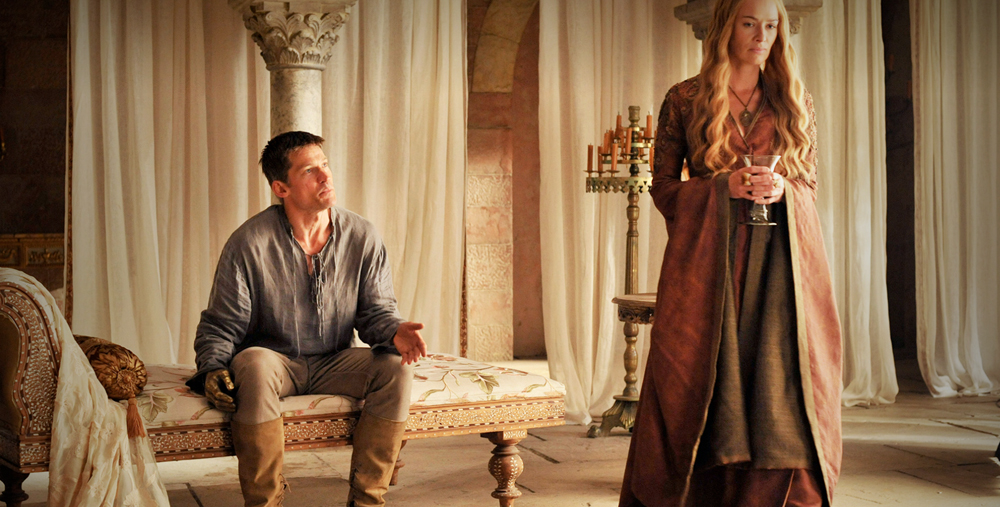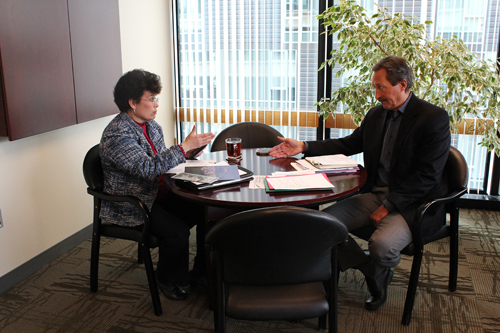DISCLAIMER: This post contains spoilers for season four of Game of Thrones up to the episode that aired April 20, as well as discussion of a scene in the book “A Storm of Swords.”
I can’t be the only fan of HBO’s hit series Game of Thrones who is marveling at the fact that the type of nerdy fantasy novels I used to read in middle school are now part of the cultural lexicon.
Despite a host of very vivid and powerful female characters, George R.R. Martin’s epic still has the vibe of being written for basement-dwelling, Comic Con-frequenting boys who want to read about naked wenches. But Martin himself is an extremely talented and eloquent writer, which is why I think he’s broken through some of the stereotypes and managed to appeal to a broader audience.
The television show Game of Thrones has featured a host of grisly, gory and otherwise disturbing scenes from the books, including beheadings, child murder, massacres at weddings and incestuous sex. That’s why it seems kind of ridiculous that the Daily Beast has deemed the rape scene between Jaime and Cersei Lannister as potentially “the most disturbing scene in Game of Thrones history.” Really?
As Martin himself said on his blog, the scene is meant to be disturbing. Jaime violates his twin sister as she is grieving over the body of their son, Joffrey. The internet uproar over this scene has ranged from the justified to the completely ludicrous, and I’m really torn about it.
On one hand, the argument that it is a wrong and even sensationalist creative choice, and that it does a disservice to Jaime’s character development, is valid. But I also think the moral policing of art has gone way too far, especially on a show with so many other violent elements.
If you’re trying to wade through the myriad of press this scene has received, I would suggest starting with a blog post by Natalie San Luis on xoJane. While I feel wary at correlating fictional rape between an incestuous brother and sister with the realities of rape in the real world, San Luis makes an excellent case for why the scene in “A Storm of Swords” that the television scene was based on was not really more consensual than it was on screen, despite what most of the media and know-it-all Internet posters are arguing. The scene in either context involves Cersei initially saying no and protesting, but then seeming to give up and relent to her brother’s desires.
Even in such a heightened fictional setting as this, the argument that a woman initially saying no until she relents doesn’t change the fact that she was raped is completely valid. In fact, I think half the problem with the scene is that show director Alex Graves and actor Nikolaj Coster-Waldau, who plays Jaime, have both refused to fully characterize the act as rape.
This would be disturbing if they were talking about something that happened in real life, and it also wasn’t very smart of them to say in the press. But if Graves and Coster-Waldau want to discuss the gray areas of Jaime and Cersei as characters, the complicated emotions that might lead to a “yes and no” answer and the subtext of the scene from an artistic standpoint, they ought to be allowed to.
I think it’s great we live in an age where media is being scrutinized through a more progressive lens, simply because sexism and all forms of bigotry do exist and are prevalent in the pop culture we consume. Game of Thrones may indeed have a problem with using sexual violence as a cheap and easy plot point, or it may be interpreting these already-sensationalist scenes from books that were written a decade ago.
Many people criticizing the Jaime and Cersei scene point to a scene in season one where Daenerys is married off to Khal Drogo, and the consummation of this wedding was filmed as much less consensual than it was in the book. But in the book, Daenerys is fourteen years old. Is that somehow less offensive?
The truth is that Game of Thrones, while mythical in nature, is obviously based on a Middle Ages-esque society where these things were the norm. Martin, as well as countless others like him, may approach things like rape with the intent of being shocking or titillating. It might also be one part of an incredibly well-written larger story or character arc. If that bothers you, you are free to not read the books or watch the show, or you are free to judge for yourself and start a real discussion online about why this is wrong. But it should be wrong because it’s bad storytelling, not because of some imposed moral obligation on art and artists.
If we start a conversation about what art “should” teach or what kinds of subjects, words and ideas “don’t need” to be explored, we start down a very dangerous path. Censorship is no more of a welcome idea when it is born out of progressive politics than when it is born out of conservative politics.
There are dozens of things on Game of Thrones that could potentially spark outrage, and yet we pick and choose what’s most offensive based on arbitrary cultural values and trends.
We need and should welcome voices who will challenge the legitimacy of certain pop culture and artistic works and the motivation behind them. But we also need to live in a country, and hopefully a world, where artists are free to tell stories how they see fit. Even if they want to tell a story about fantasy incest twins.






